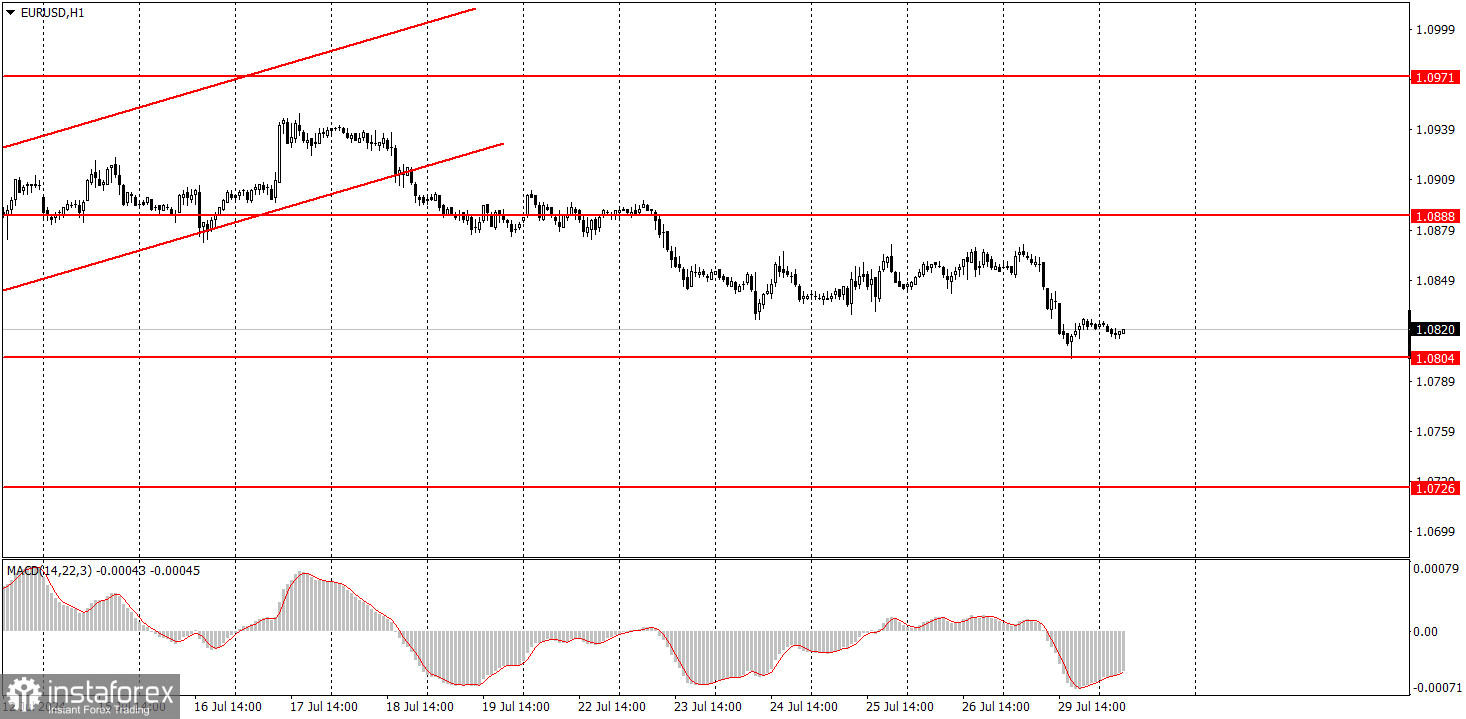Analysis of macroeconomic reports:

At first glance, quite a few macroeconomic events are scheduled for Tuesday. However, most of them are unlikely to provoke any market reaction. Let's understand why. Germany and the EU will release GDP reports for the second quarter. These are important data, but the market ignored a more significant report on US GDP last week, which also showed a rather impactful figure. The European and German GDP figures are unlikely to surprise traders with similarly resonant values. Germany will also release an inflation report, but firstly, European inflation is more important. Secondly, the European Central Bank has already started easing its monetary policy, so the inflation figure does not have as strong an influence on the euro as it used to.
In the US, the first report in the series of labor market reports—JOLTs on job openings—will be published. The market might react to it, but the report itself is not crucial.
Analysis of fundamental events:

There is absolutely nothing noteworthy among Tuesday's fundamental events. No significant speeches or other events are scheduled for this day. The Federal Reserve and the Bank of England are in a "quiet period," and the ECB meeting has already taken place.
General conclusions:
Today, there will be a lot of economic data, but the market might only react to one or two reports at most. As a result, both currency pairs may exhibit medium volatility. The euro and the pound should continue to decline, but now everything will depend on US macro data and the outcomes of the Fed and BoE meetings.
Basic rules of a trading system:
1) The strength of a signal is determined by the time it took for the signal to form (bounce or level breakthrough). The shorter the time required, the stronger the signal.
2) If two or more trades around a certain level are initiated based on false signals, subsequent signals from that level should be ignored.
3) In a flat market, any currency pair can produce multiple false signals or none at all. In any case, it's better to stop trading at the first signs of a flat market.
4) Trades should be opened between the start of the European session and mid-way through the U.S. session. All trades must be closed manually after this period.
5) In the hourly time frame, trades based on MACD signals are only advisable amidst substantial volatility and an established trend, confirmed either by a trendline or trend channel.
6) If two levels are too close to each other (from 5 to 20 pips), they should be considered as a support or resistance zone.
7) After moving 15 pips in the intended direction, the Stop Loss should be set to break-even.
What's on the charts:
Support and Resistance price levels can serve as targets when buying or selling. You can place Take Profit levels near them.
Red lines represent channels or trend lines that depict the current trend and indicate the preferred trading direction.
The MACD (14,22,3) indicator, encompassing both the histogram and signal line, acts as an auxiliary tool and can also be used as a source of signals.
Important speeches and reports (always noted in the news calendar) can profoundly influence the price dynamics. Hence, trading during their release calls for heightened caution. It may be reasonable to exit the market to prevent abrupt price reversals against the prevailing trend.
Beginners should always remember that not every trade will yield profit. Establishing a clear strategy, coupled with effective money management, is key to long-term success in trading.





















